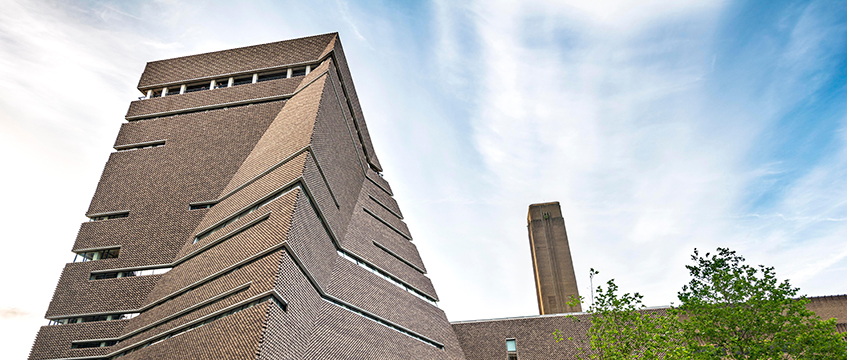Residents of Neo Bankside have won a nuisance case against Tate Modern. Louise Clark looks at how this may affect how nuisances are now defined in court.
Key points
- There is no conceptual limit to what can constitute a nuisance
- The fundamental principles need to be applied
- Overlooking is not actionable but is not the same as visual intrusion, which is
A majority of the Supreme Court has allowed the flat owners’ appeal in Fearn and others v Board of Trustees of the Tate Gallery [2023] UKSC 4; [2023] PLSCS 22, deciding that the Tate Modern is responsible for visual intrusion caused by significant numbers of people looking into the appellants’ flats.
The background
The appellants own flats in a block in the Neo Bankside development, neighbouring the Tate Modern, with walls constructed mainly of glass. The flats are at around the same height above ground as a viewing platform on an extension to the Tate Modern – the Blavatnik Building – which affords panoramic views of London. On the south side of the viewing platform visitors can see directly into the claimants’ flats.
At the time of the trial in 2019, the viewing platform was open every day of the week and visited by 500,000–600,000 people each year.
The judge’s decision
The judge found ([2019] EWHC 246 (Ch); [2019] EGLR 15) that the flats were under near constant observation by visitors to the viewing platform, who looked, peered and took photographs of the flat interiors, many of which were posted online. The extent of the viewing was a material intrusion into the privacy of the appellants’ living accommodation.
However, the intrusion did not amount to a nuisance because the Tate Modern’s use of the top floor of the Blavatnik Building was reasonable and the appellants were responsible for their own misfortune by acquiring properties with glass walls.
They could take remedial measures to protect their own privacy, such as lowering their blinds during the day or installing net curtains.
The appeal
The Court of Appeal decided ([2020] EWCA Civ 104; [2020] EGLR 14) that the judge’s reasoning involved material errors of law and that, if the principles of common law nuisance were correctly applied, the claim should succeed. Yet they dismissed the appeal on the ground that “overlooking”, no matter how oppressive, could not in law count as a nuisance.
The law
Private nuisance is a wrongful interference with a claimant’s use and enjoyment of its rights over land, including buildings and easements which attach to the land.
Nuisance can be caused by any means. Interference may be tangible – incursion of Japanese knotweed, or obstructing access; or intangible – fumes, noise, vibration or an unpleasant smell. The basis of the claim, in all cases, is the resulting interference with the utility
or amenity value of the claimant’s land, not personal discomfort to those occupying it.
The law is concerned with maintaining a balance between the conflicting rights of neighbouring landowners. The following principles govern whether interference with the use and enjoyment of land is unlawful:
1. The interference with the claimant’s land must be substantial, judged objectively, so minor annoyances are insufficient.
2. The common and ordinary use of land, having regard to the locality, takes priority over particular and uncommon uses. So, where the defendant’s activity substantially interferes with the ordinary use and enjoyment of the claimant’s land, there is no liability if the activity is no more than the ordinary use of the defendant’s own land (Southwark London Borough Council v Tanner [2001] 1 AC 1).
3. The notion of reasonable user or “give and take” between neighbours is key and requires reciprocity. If the user is reasonable, the defendant will not be liable for harm to their neighbour’s enjoyment of his land, but they will be so liable if it is unreasonable (Bamford v Turnley [1862] 3 B&S 62).
4. It is not a defence that the defendant was already using its land in the manner complained of before the claimant acquired the adjoining land.
The decision
The application of the legal principles by the judge was entirely straightforward. On the judge’s findings, it was beyond doubt that the viewing and photography from the viewing gallery caused a substantial interference with the ordinary use and enjoyment of the appellants’ properties. For the ordinary person, living in such circumstances would be like being on display in a zoo.
However, the judge had applied the wrong test, by asking whether the use of the Tate Modern’s land was unreasonable, rather than whether it was a common and ordinary use. Had he applied the correct test he would have been bound to conclude that inviting several hundred thousand visitors a year to look at the view from your building could not be regarded as a common and ordinary use of land, even in urban south London.
The flats were not abnormal or unusual, but the judge considered that the appellants had exposed themselves to visual intrusion by choosing to live in flats with glass walls.
Had the Tate Modern been making an ordinary use of its land they could have had no complaint. However, it was not the victims’ responsibility to avoid the consequences of an abnormal use of land by putting up blinds or net curtains. This was not “give and take” but all one way.
While mere overlooking cannot give rise to a liability in nuisance, the claimants did not object to overlooking from the Blavatnik Building. Their complaint was different. The Tate Modern invites members of the public to look out from a viewing platform from which they can – and do – peer into the claimants’ flats and allows this to continue without interruption for most of the day, every day. This was a nuisance.
The dissenting judgment found the open design of the appellants’ flats unusual by the standards of the locality and would have upheld the judge’s decision.
Louise Clark is a property law consultant and mediator








